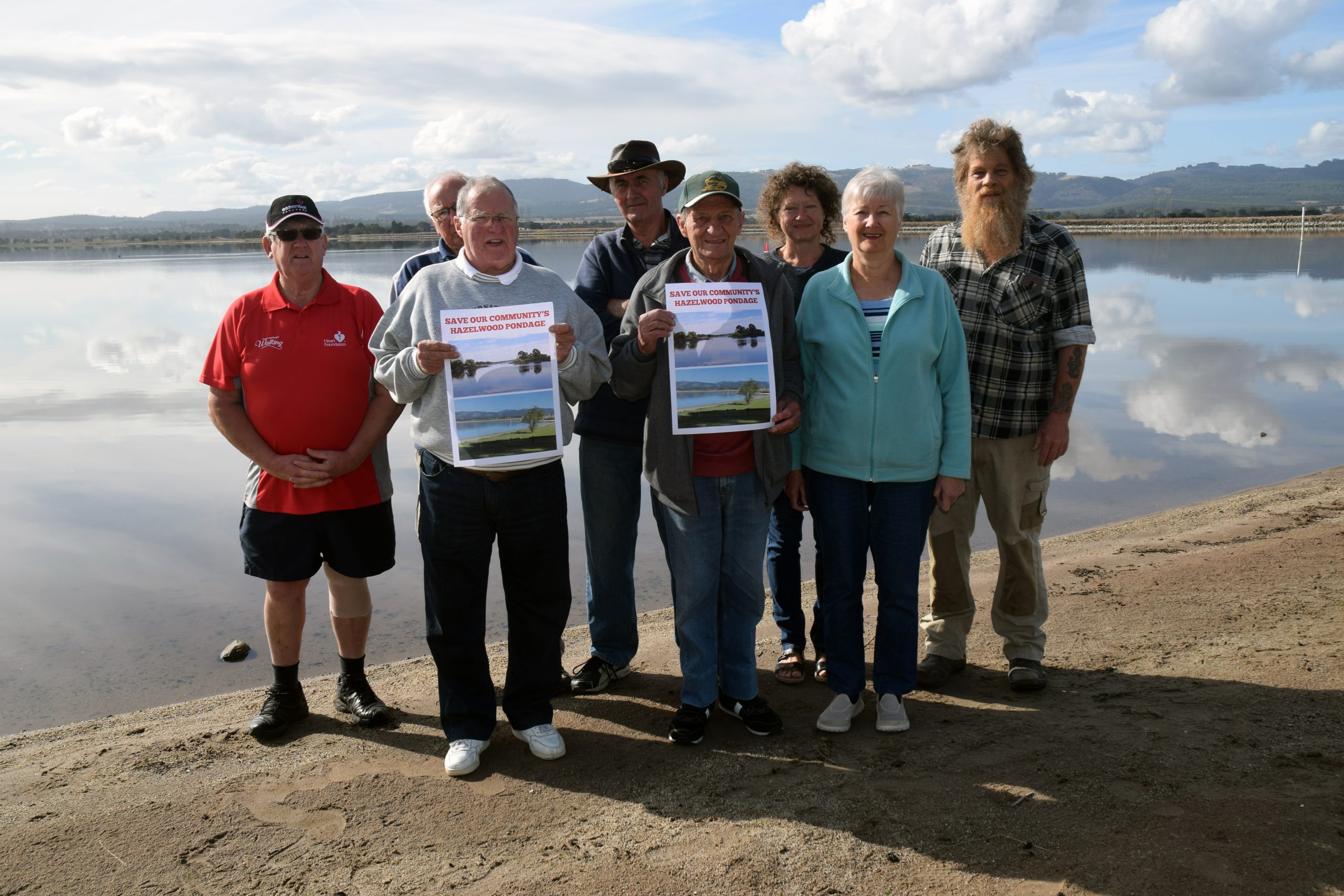By PHILIP HOPKINS
INCLUDING nuclear power in the energy mix is cheaper – by up to 44 per cent – in the medium-term future, but people in rural and regional Australia still bear a disproportionate burden from the energy transition.
That was a key finding of the report by independent consultants Frontier Economics, who modelled the impact of including nuclear power in the national electricity market (NEM).
It is based on the Integrated Systems Plan (ISP) of the Australian Energy Market Operator (AEMO) and does not include Western Australia or Northern Territory.
The federal Opposition has proposed building seven nuclear power stations on the sites of coal-fired power stations, including Loy Yang in the Latrobe Valley, and use existing transmission lines.
The Opposition has based its policy on the Frontier Economics report.
The managing director of Frontier Economics, Danny Price, said his firm had funded and directed the report, but had consulted with the federal Coalition about their nuclear plans.
“The modelling approach and assumptions do not necessarily reflect the federal Coalition’s view about how nuclear power would be included in the national electricity market (NEM),” he said.
The analysis uses AEMO’s ‘Step Change’ and ‘Progressive’ scenarios through to 2051 to compare the costs of nuclear power. A third scenario, Green Energy Exports, was not modelled because it was deemed unlikely to occur.
AEMO considers Step Change the most likely – a world with rapid growth in electricity demand as electrification of services provided by fossil fuels (mainly coal, gas and oil) gives way to rapid development of wind, solar and energy storage.
The Progressive scenario, deemed one per cent less likely, also assumes growth, but not as rapid as Step Change.
The Coalition regards the Progressive scenario as most likely, in contrast to federal Labor’s pursuit of Step Change.
The report says this difference has big implications for policy: Step Change requires more land for wind and solar farms, and more transmission across rural and regional Australia; required land and transmission inputs are needed in advance to give investors certainty; and more money will have to be spent in advance to bring about development.
Mr Price said: “You can’t compare renewable energy and nuclear power generation and costs like apples to apples.”
Many commentators simply and erroneously compared the cost of a renewable generator (wind or solar) plus the costs of back-up generation to the capacity and operating costs of a nuclear power station.
“Such crude assessments do not account for the fact that much more renewable capacity is required to produce the same amount of electricity compared to a nuclear power station,” Mr Price said.
“Nor does it account for the requirement to store surplus electricity from renewable sources as well as the back-up generation. Such simple comparisons also neglect to take into account the enormous amount of investment required to connect renewable generators located in areas where there is presently no or inadequate transmission network capacity.
“There is also an enormous cost to rural and regional Australians who have to bear a disproportionate burden of the energy transition – first with the loss of jobs in the coal generation sector and now they have to bar the loss of amenity from living with wind and solar farms in their community, and expensive new and augmented transmission networks across their land.”
This loss of amenity “is a legitimate economic cost”, but many calculations ignored transmission costs entirely, he said.
Mr Price said Frontier Economics’ modelling had concluded:
The AEMO’s Progressive scenario including nuclear power is 44 per cent cheaper than the Step Change model without nuclear;
Using a Step Change model with nuclear will be 25 per cent cheaper than using renewable and storage alone, and;
Nuclear power in Australia’s energy system is cheaper in both scenarios.
A summary of the scenario cost findings for the period from 2025 to 2051, including the impact of different transmission costs, is:
AEMO’s preferred Step Change is by far the most expensive, with combined generation and transmission costs of $595 billion. These do not include consumer energy resources or distribution costs;
For AEMO’s Step Change scenario, using nuclear power, the total NEM system costs can be reduced by about $150 billion from $594 billion to $446 billion – 25 per cent cheaper than renewables and storage, and;
For AEMO’s Progressive scenario, using nuclear power, the total NEM system costs can be reduced by $106 billion from $437 billion to $331 billion – also 25 per cent cheaper than renewables and storage.
The federal Coalition’s stance is close to the Progressive scenario including nuclear power, which is 44 per cent cheaper at $331 billion compared to the federal Labor government’s AEMO’s Step Change scenario. This is estimated to cost $594 billion, the report says.
Mr Price said the cost differences between the AEMO cases and the nuclear alternative were so large, the costs of nuclear capacity could double before the costs of AEMO’s approach and the nuclear alternative were equivalent.
“It is very unlikely that the inclusion of nuclear power in the NEM would, in practice, ever be more expensive than AEMO’s approach,” he said.
The report’s modelling does not include the costs of consumer energy resources (rooftop solar panels and behind-the-meter batteries), the costs of upgrades and extensions to the distribution networks, nor the costs to consumers who switch appliances and equipment that use gas to electricity.
“These costs were not accounted for to maintain consistency with the ISP, which also does not account for these costs. These missing costs will be very large and when they are taken into account, the total cost of the transition of the electricity sector will be well above a trillion dollars over the next 25-30 years if Australia continues with AEMO’s transition plans,” Mr Price said.
Despite the inclusion of nuclear, renewables will continue to dominate electricity output.
Under the Step Change scenario, when 13,000 MW of nuclear capacity is included, wind and solar capacity grows from 24,000 MW in 2025 to 72,000 MW by 2051. Nuclear capacity would account for just eight per cent of NEM capacity. If wind and solar generate 60 per cent of the electricity under Step Change with nuclear included, nuclear power stations would generate 29 per cent of electricity.
When the Progressive scenario includes nuclear, wind and solar grow from 24,000 MW to about 46,000 MW by 2051 – about 50 per cent of electricity. Nuclear would generate 38 per cent of electricity with just 13 per cent of total capacity.
Mr Price said using nuclear, only about half the amount of gas generation is required as compared to AEMO’s approach under Step Change.
Mr Price said continuing with coal generation would not lower the long-term costs.
“Every coal fired generator that currently exists will reach the end of their operational life during the modelling period to 2051. Indeed, many coal generators are close to the end of their operational lives now,” he said.
“The assumed pattern of coal closures used in the report modelling is very similar to the announced by the owners. Nuclear power stations are modelled to replace around 65 per cent of existing coal-fired generators.”
Even building new coal stations would not cost less than nuclear.
“This is because the capital cost for a replacement coal generator with carbon capture and storage – which, realistically, is the only way existing coal generators would be permitted to repower or a new coal-fired generator to be built – is, according to the (CSIRO) GenCost estimate,” he said.
Mr Price said the economy was much better off in the Progressive scenario, with nuclear power compared to AEMO’s preferred Step Change solution using primarily renewables and storages.
It was 44 per cent cheaper and likely to be more economic that replacing existing coal generators.











